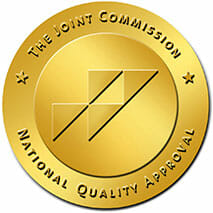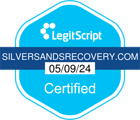What Meds Are Most Common in Prescription Drug Addiction in Arizona?
Prescription drug addiction has become a significant problem in Arizona. Although opioids comprise most of the negative health statistics surrounding prescription drugs, there are other addictive drugs that are abused. Some people may also abuse drugs that are not known to be addictive, such as muscle relaxers. For many people, abuse of prescription medication can be harmful or fatal. These are some common addictive prescriptions that are individuals are abusing.
Prescription Opioids
Opioids are prescribed for short-term pain, such as post-surgical recovery. They slow heart rate, blood pressure, and breathing. Because of this, dependency and overdose can be fatal. Tolerance adds to abuse risks. Arizona’s opioid death rate was about 13 people per 100,000 in 2017 [1]. Between 2013 and 2017, opioid deaths increased by 76%.
These are some common signs [2] of opioid misuse:
- Nausea or vomiting
- Constipation or diarrhea
- Lethargy
- Drowsiness
- Confusion and dizziness
Some of the specific opioid-based prescription drugs that are often abused are:
Oxycodone
One of the attributes that oxycodone and other opioids have that makes them so dangerous is how they change the brain [3]. The brain is affected by the steep elevation of dopamine. The effects on the brain make it nearly impossible for a person to quit taking the drug.
Fentanyl
Fentanyl is a synthetic opioid that commonly treats severe pain, such as pain associated with late-stage cancer. It is 50 to 100 times stronger than morphine and has been linked to an increase in deaths in recent years [4]. Many of those deaths were tied to fentanyl that was illegally manufactured.
Meperidine
Meperidine is a synthetic opioid analgesic. According to the FDA [5], it is not recommended for ongoing pain treatment. Because a buildup of its metabolite can lead to toxicity, it is only recommended to treat episodic pain.
Codeine
Codeine treats pain that is mild to moderately severe and is most commonly used to treat coughing. [6] It may be sold as a single product or with other substances, such as acetaminophen.
Darvocet, Percocet, methadone, hydrocodone, hydromorphone, and morphine are some other examples of opioids or combination drugs that contain opioids [7].
Stimulants
Stimulants work to treat ADHD or narcolepsy. Ritalin and Adderall are two common examples that are abused. There is a danger when a stimulant is not being used as a legitimate treatment, such as using a friend’s prescription. According to research from Johns Hopkins University, emergency room visits rose by 67% in adults who misused Adderall [8]. These are a few common signs of stimulant abuse:
- Overly talkative
- Aggression
- Loss of appetite
- Memory loss
- Weight loss
Benzodiazepines
This group of addictive drugs includes Xanax, Klonopin, Ativan, and several others. Acting on the central nervous system, benzodiazepines produce a sedative effect to treat anxiety [9]. Users can build up a tolerance to them and often take too much to attempt to get the same effects. Excessive benzodiazepine use leads to toxicity. These are a few common signs of abuse:
- Slurred speech
- Weakness
- Blurred vision
- Confusion
- Reduced coordination
Why Rehab Is Important for Overcoming Prescription Drug Addiction
Without a comprehensive rehab program such as Silver Sands Recovery, it is nearly impossible to break an addiction to prescription drugs. While detoxification is important for medication addictions, emotional and mental support are also critical. Learning strategies to deal with urges, triggers and environments are also important. Silver Sands Recovery addresses the underlying issues that may contribute to the urge to abuse substances. In addition to safe detox, we offer the following:
- Twelve-step programs
- Holistic treatments
- Dual diagnosis treatments
- Extended care
- Outdoor therapy
Combinations of these therapies hold the key to success, which is breaking the cycle of addiction permanently. Our staff will help guide you and equip you with the strategies to achieve that in your unique situation.
If you or a loved one is struggling with prescription drug addiction, please contact us to learn more.
SOURCES:
[1] https://www.drugabuse.gov/drugs-abuse/opioids/opioid-summaries-by-state/arizona-opioid-summary
[2] https://www.healthline.com/health/addiction/addictive-prescription-drugs#opioids
[3] http://www.cesar.umd.edu/cesar/drugs/oxycodone.asp
[4] https://www.cdc.gov/drugoverdose/opioids/fentanyl.html
[5] https://www.accessdata.fda.gov/drugsatfda_docs/label/2011/005010s050lbl.pdf
[6] https://www.fda.gov/drugs/postmarket-drug-safety-information-patients-and-providers/codeine-information
[7] https://www.webmd.com/pain-management/guide/narcotic-pain-medications#1
[8] https://www.jhsph.edu/news/news-releases/2016/adderall-misuse-rising-among-young-adults.html
[9] https://www.webmd.com/mental-health/addiction/benzodiazepine-abuse#1
About the author:

Lisa Waknin is the Founder and Director of Silver Sands Recovery, located in Prescott, Arizona. Lisa started Silver Sands Recovery after immersing herself in the addiction treatment world for several years to figure out what could be done differently to help her daughter and others like her to overcome addiction and stay sober. She believes in a hands-on treatment approach, which includes taking someone out of their environment, providing a 90-day program in a structured environment. During treatment, clients not only recover physically but also learn to live their life again. Lisa is a sought-after expert speaker for recovery support groups, charities, schools, communities, and companies wanting to educate themselves on the explosion of opiate and heroin abuse in our country and the best way to understand, treat, and beat it.





